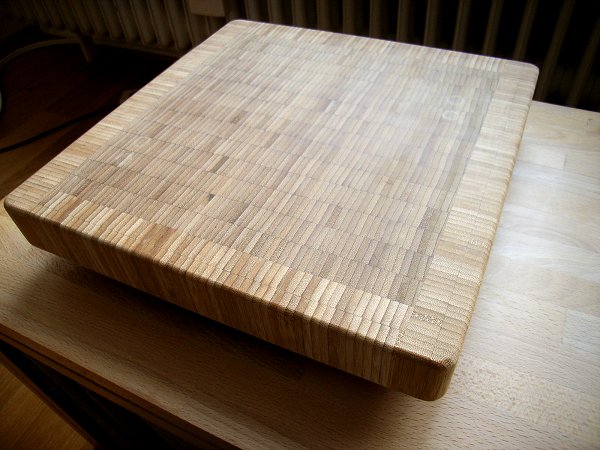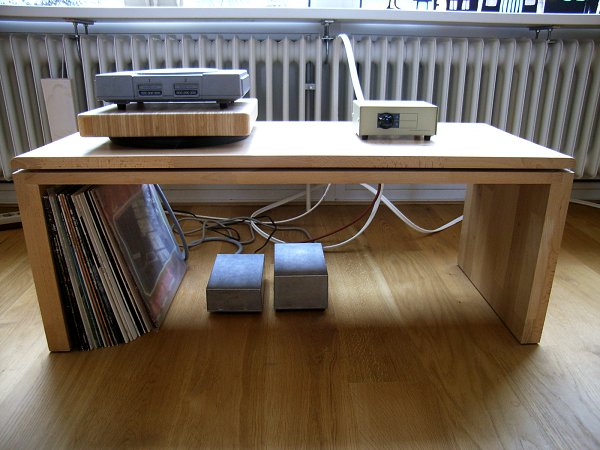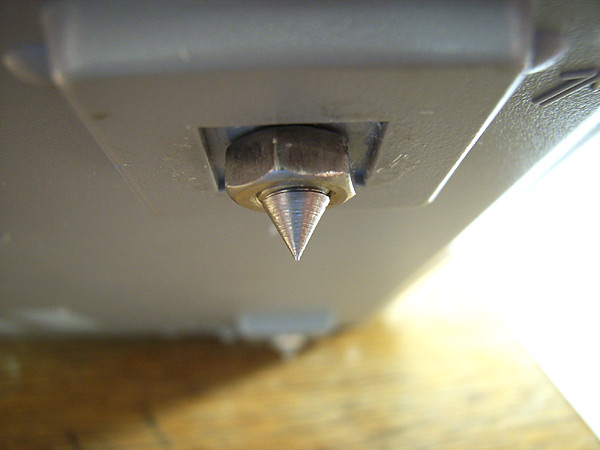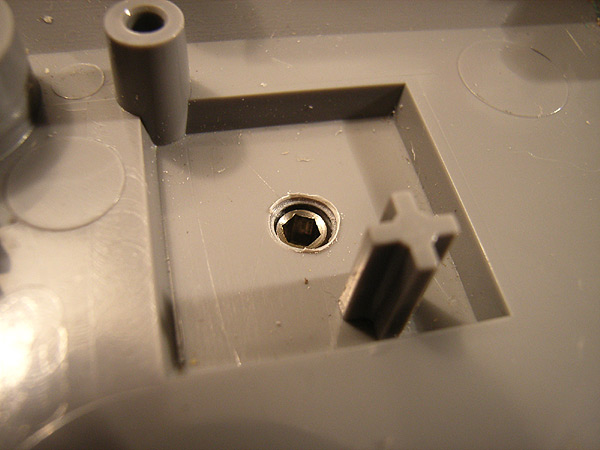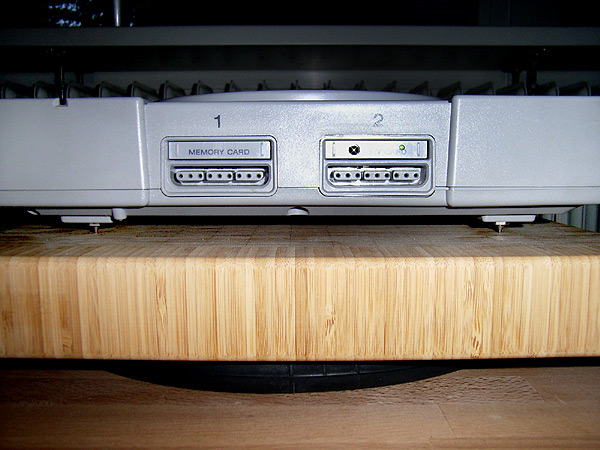This is a view on my current setup. The idea behind it is simple: in order to achieve a low resonance frequency a high vibrating mass is required. This is provided by a heavy wooden plank. On the other hand, a spring element also providing some damping is needed. I have experimented with some different materials including some commercial damping feet.
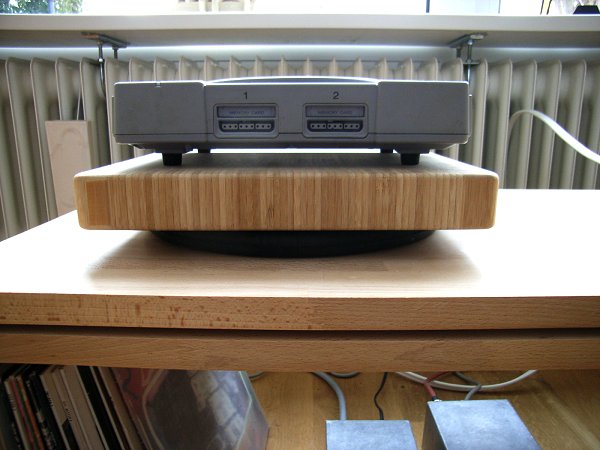
Eventually, the best solution turned out to be a weakly inflated bycicle inner tube. The one I use is taken from a childrens bike, it has a diameter of about 30 cm.
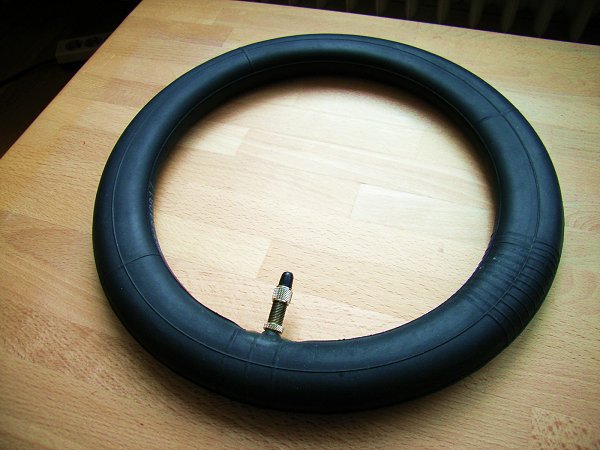
Directly on top of the tube I placed a plank of bamboo end-grain wood. I was told that this material has preferrable vibrational properties on itself, but the main advantage for the present purpose is that it has a very high density, i.e. it is rather heavy at not too large outer dimensions (and it looks good). My plank weighs almost 3 kg and I found it in a kitchen store. The size is 30 x 30 cm, the thickness is 4 cm.
You may use a marble or granite plate or even an ordinary paving stone. Just experiment with some heavy supports here.
The PS1 is placed on top of this plate. I have replaced the original felt feet by rubber feet but this may not be the optimum solution. It is very important that the PS1 is rigidly coupled to the support, so that the high mass of the latter has an effect. Therefore, I will soon replace the rubber feet by spikes to provide good coupling (see update below).
